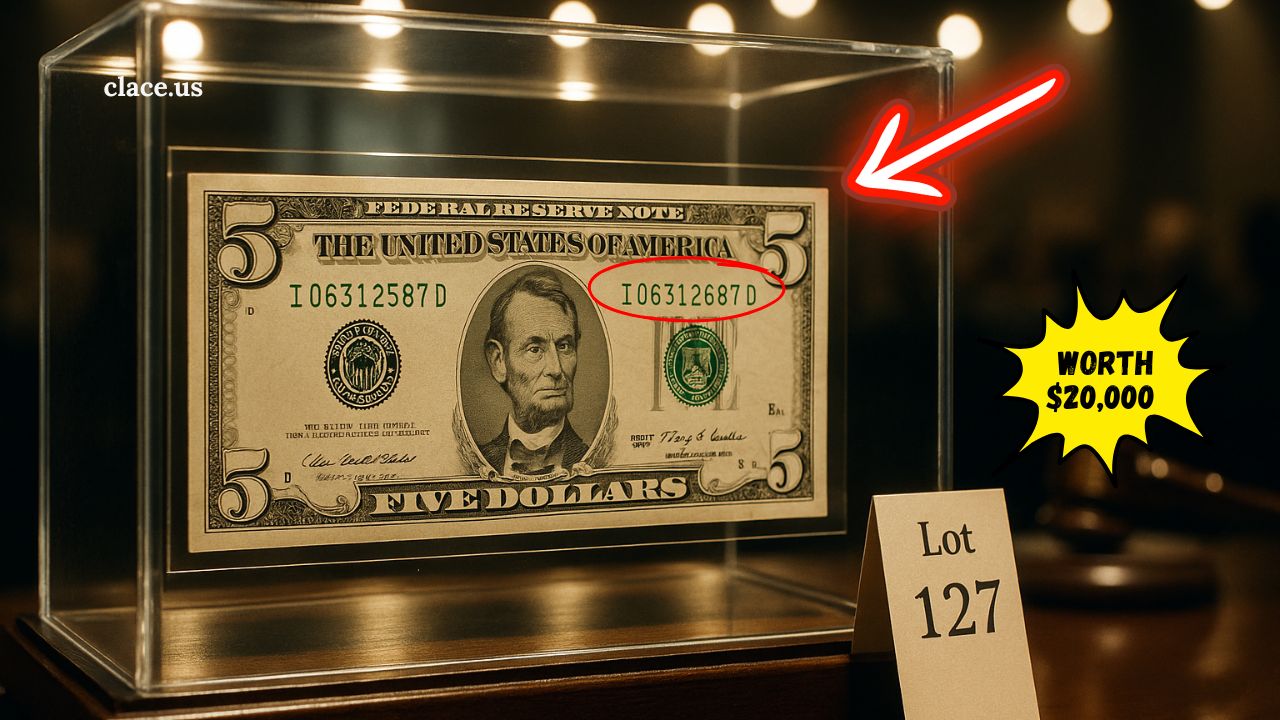This Rare $5 Bill With A Mismatched Serial Number Could Fetch You $20,000
At first glance, a $5 bill may not seem like much. But hidden among everyday notes are rare treasures that collectors are willing to pay thousands for.
One such rarity is the mismatched serial number error — a printing mistake where the two serial numbers on a bill don’t match. These error notes are highly collectible, and in some cases, can be worth as much as $20,000 or more.
What Is a Mismatched Serial Number Error?
Every U.S. bill is printed with two matching serial numbers. A mismatched serial number error occurs when these numbers don’t match exactly.
It could be a flipped digit, a missing number, or even misaligned printing. Because the Bureau of Engraving and Printing has strict quality controls, only a handful of these errors escape into circulation, making them incredibly rare.
Why Are These Notes So Valuable?
Several factors determine the value of a mismatched serial number $5 bill:
- Rarity – Very few error notes are released, which drives collector demand.
- Condition – Crisp, uncirculated bills fetch the highest prices, while worn bills are less valuable.
- Error Type – The more dramatic the mismatch, the more collectors are willing to pay.
- Historical Appeal – Notes from certain years or with unique characteristics often sell for more.
Value Breakdown of Mismatched $5 Bills
| Type of Mismatch | Estimated Value Range |
|---|---|
| Minor mismatch in circulated condition | $1,000 – $1,500 |
| Prominent mismatch, visible error | $5,000 – $20,000 |
| High-grade, uncirculated rare example | $20,000 – $100,000+ |
How to Spot One in Your Wallet
- Check Both Serial Numbers – Compare the numbers on the upper left and lower right of the bill. They should match exactly.
- Look for Anomalies – Flipped digits, extra digits, or numbers out of sequence can indicate an error.
- Inspect Alignment – Sometimes, numbers are printed slightly higher or lower, signaling a misprint.
- Preserve Condition – If you find one, avoid folding or handling it too much, as condition impacts value.
What To Do If You Find a Rare $5 Error Bill
- Store it safely in a protective sleeve to prevent further wear.
- Get it authenticated by a professional grading service, which adds credibility and can increase value.
- Consider selling through an auction house or reputable dealer to reach serious collectors.
Why Collectors Love Error Notes
Error notes are prized because they combine scarcity and uniqueness. Unlike regular notes printed by the millions, each error bill is one-of-a-kind.
For collectors, owning something unusual—like a $5 bill with mismatched serial numbers—feels like holding a piece of printing history.
Real Market Potential
While not every mismatched serial number bill will reach the $20,000 mark, many have sold for thousands depending on their rarity and condition.
Even circulated bills can fetch four figures, while pristine examples in uncirculated condition can bring in record-breaking amounts.
The next time you handle a $5 bill, take a closer look—you could be holding a rare mismatched serial number error worth far more than its face value. With some examples selling for $20,000 or more, it pays to check your change carefully.
Whether you’re a seasoned collector or someone who stumbled upon one by accident, these bills prove that hidden treasures really do exist in everyday life.
FAQs
It’s when the two printed serial numbers on a bill don’t match, usually due to a printing mistake.
Values range from around $1,000 for minor errors up to $20,000 or more for rare, pristine examples.
Keep it in a protective sleeve, avoid folding it, and consider professional grading for authenticity and resale value
